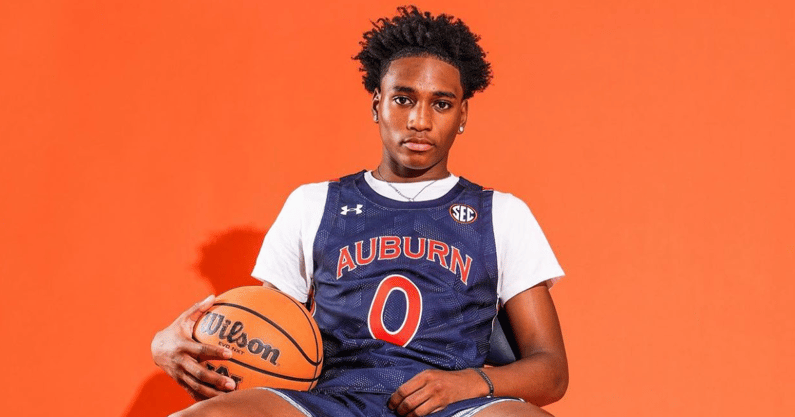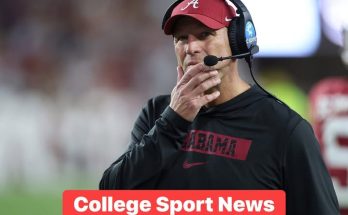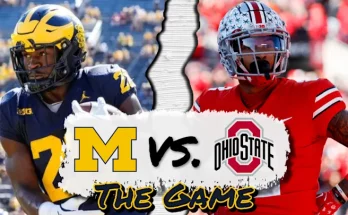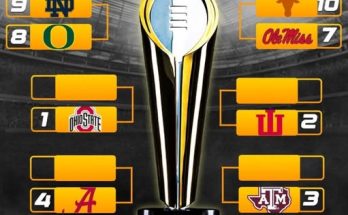Tahaad Pettiford has been a name of considerable buzz among Auburn basketball circles, and with the potential of his return to the Tigers, there’s growing anticipation about how he might fit into what is shaping up to be an all-new roster. As Auburn navigates through a transitional phase with significant roster turnover, Pettiford’s decision could become a crucial piece in their quest for sustained success. His blend of athleticism, scoring ability, and defensive versatility provides a fascinating angle to assess how he would mesh with new teammates and the evolving Auburn system.
Pettiford, a 6-foot-7 wing with notable explosiveness and a flair for slashing to the basket, has already shown flashes of brilliance during his time with Auburn. His ability to attack the rim, finish through contact, and contribute across multiple facets of the game makes him a valuable asset on both ends of the court. However, the landscape around him is shifting dramatically. Auburn is in the midst of assembling a roster that blends fresh talent with experienced transfers, aiming to forge a team capable of competing at the highest level in the highly competitive Southeastern Conference (SEC).
The Tigers’ current roster construction involves a mix of incoming freshmen, transfer portal acquisitions, and a handful of returning players who bring a wealth of experience. Pettiford’s potential return would add a layer of depth and versatility to this group, but the question remains: How would he fit into this new Auburn roster, and what role might he be expected to play?
Firstly, Auburn’s coaching staff under Bruce Pearl has been adept at developing players who bring versatility and energy to the floor. They value wings who can guard multiple positions, create offense in transition, and contribute to the team’s physical style of play. Pettiford fits this mold perfectly. His size and athleticism allow him to defend opposing wings and forwards, while his speed and agility are assets in Auburn’s up-tempo game plan. This defensive versatility is especially important in today’s college basketball environment, where switching defenses and guarding various types of offensive threats are the norm.
Offensively, Pettiford’s return would provide Auburn with a dynamic slasher who can also create his own shot off the dribble. While his perimeter shooting has been inconsistent at times, his ability to attack closeouts and draw fouls adds a valuable dimension to Auburn’s offense. In a roster that might feature sharpshooters and ball-handlers, Pettiford could serve as the primary driver and finisher, ensuring that defenses cannot simply collapse on the shooters without consequences.
The Tigers’ new roster is expected to include several promising young players who bring shooting and playmaking skills. Integrating Pettiford as a secondary ball-handler and scorer could help balance the offensive load. His capacity to draw attention on the drive opens up opportunities for teammates to operate in space, making the offense more fluid and difficult to defend. Moreover, his rebounding ability as a wing provides Auburn with additional possessions and limits second-chance opportunities for opponents, an area that can often be decisive in close games.
Another factor to consider is leadership. Pettiford’s experience at Auburn means he understands the program’s culture and expectations. Returning to a mostly new roster would position him as a natural leader who can mentor younger players. The ability to lead by example through work ethic, toughness, and on-court performance is often undervalued but critical to team cohesion and success. Auburn’s coaching staff likely values this intangible contribution highly as they piece together their new lineup.
The challenge for Pettiford, however, lies in adapting to potential changes in the offensive and defensive schemes. With new teammates and possibly new offensive sets designed to maximize the strengths of incoming players, Pettiford will need to be flexible and willing to evolve his game. For example, improving his perimeter shooting would make him an even more dangerous threat and harder to guard. Stretching his range consistently beyond the three-point line would force defenses to respect his shot, thereby opening driving lanes even more.
Defensively, maintaining his intensity and continuing to develop his defensive instincts will be key. Auburn’s system often requires quick rotations and high energy, so Pettiford’s conditioning and focus will be tested. If he can elevate his defensive consistency, he would solidify his spot as a key two-way contributor and earn valuable minutes regardless of the opposing matchup.
It’s also worth noting how Pettiford’s role might compare to other returning players or newcomers. Auburn’s roster turnover means there may be multiple wings vying for playing time. Competition for minutes could be fierce, and Pettiford will have to assert himself to carve out a role that maximizes his strengths. Coaches tend to reward players who demonstrate not only skill but also a willingness to fit into team dynamics and execute their roles with discipline.
Given Auburn’s ambitions and the SEC’s competitive nature, the margin for error is slim. Pettiford’s potential return represents a low-risk, high-reward scenario. He brings an established level of talent and experience to a roster that is still finding its identity. If he can refine his weaknesses and maintain his physicality, he could emerge as one of the team’s primary contributors.
From a tactical standpoint, Auburn may utilize Pettiford primarily as a wing who spaces the floor and creates opportunities in transition. His ability to run the floor and finish in the open court could lead to easy points and momentum swings. Additionally, in half-court sets, his slashing ability and capacity to penetrate defenses would be vital in breaking down opponents’ defensive schemes. Auburn has traditionally relied on physical play, and Pettiford’s style fits that mold, ensuring he can help set the tone early in games.
Considering Auburn’s likely emphasis on recruiting players who can contribute immediately, Pettiford’s familiarity with the system and experience in SEC play give him an edge over freshmen who may need time to adjust. This could translate to more significant playing time and opportunities to influence games early in the season.
Moreover, Pettiford’s presence could influence Auburn’s recruiting and roster management decisions moving forward. A strong showing from him could elevate the team’s profile and help attract other talented players. His work ethic and improvement would send a message to younger teammates about the standards expected at Auburn.
The Tigers are in a rebuilding phase, but the return of a player like Pettiford could provide a stabilizing force amid the changes. His skill set aligns well with Auburn’s style of play, and his return would be welcomed by fans and coaches alike.



